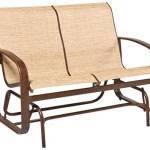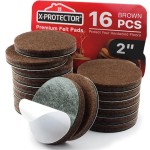How to Find Antique Furniture
Antique furniture holds a unique charm, often imbued with history and craftsmanship. Whether you are seeking a statement piece to enhance your home decor or a valuable investment, finding antique furniture can be a rewarding endeavor. Embarking on this journey requires knowledge, patience, and a keen eye for detail. This article will guide you through the essential steps to discover antique furniture that aligns with your preferences and budget.
1. Define Your Search Criteria
Before embarking on your search, it's crucial to establish a clear understanding of what you seek. This involves defining your preferences, budget, and desired era or style of furniture. Consider the following factors:
- Style: Do you favor Victorian, Art Deco, Mid-Century Modern, or another style?
- Material: Are you interested in wood, metal, or a combination? Specific woods like mahogany, walnut, or oak can be more sought-after.
- Functionality: Do you require a specific piece, such as a dining table, dresser, or sofa? Or are you open to exploring various options?
- Condition: Are you looking for pristine furniture or pieces with character and patina?
- Budget: Set a realistic price range for your desired furniture. Antique prices can vary greatly depending on age, rarity, and condition.
By defining these criteria, you can narrow your search and avoid spending time on items that don't meet your needs.
2. Explore Diverse Sources
Finding antique furniture involves exploring various avenues. Some common sources include:
- Antique Shops and Dealers: These stores often offer a curated selection of antiques, providing expert knowledge and authentication.
- Auction Houses: Auction houses conduct regular auctions where you can bid on antique furniture. This can be a good option if you are looking for a specific piece or are willing to take a chance on a bargain.
- Estate Sales and Auctions: Homes often offer unique antique pieces that may not be found in traditional shops.
- Online Marketplaces: Websites like eBay, Etsy, and specialized antique websites offer a wide range of antique furniture from various sellers worldwide.
- Antique Fairs and Shows: These events bring together multiple antique dealers and sellers in one location, offering a diverse selection and opportunities to bargain.
- Thrift Stores and Flea Markets: While not always guaranteed, these venues can sometimes contain hidden antique gems at affordable prices.
Each source has its advantages and disadvantages. Researching different options and comparing pricing can help you find the ideal fit for your needs.
3. Learn to Evaluate Furniture
Once you find potential antique furniture, it's crucial to assess its authenticity, condition, and value. Here are some key points to consider:
- Age and Origin: Determine the furniture's age and origin. Look for hallmarks, stamps, or markings that provide clues.
- Construction and Materials: Examine the craftsmanship and materials used in the furniture.
- Style and Period: Identify the furniture's style and period to determine its historical significance and value.
- Condition: Assess the furniture's condition, noting any wear and tear, repairs, or modifications.
- Value: Consult with experts, online resources, or antique guides to estimate the furniture's fair market value.
If you are unsure about a piece's authenticity or value, consult with an expert, such as an appraiser or antique dealer.
4. Authenticity and Provenance
Authenticity is a crucial consideration when acquiring antique furniture. Beware of fakes or reproductions, as these can be deceptively similar to genuine antiques. Look for signs that indicate the piece is original, such as:
- Consistent construction: The construction should reflect the period and style of the furniture.
- Original hardware: Examine the hinges, locks, handles, and other hardware for signs of age and consistency with the piece.
- Patina: True antiques develop a unique patina, a surface finish that reflects age and use.
- Provenance: A clear record of the furniture's history can enhance its value and authenticity.
5. Negotiate and Purchase
Once you have identified a potential antique piece, it's time to negotiate a fair price. Here are some tips:
- Research: Know the value of comparable antique furniture to establish a reasonable price range.
- Be polite but firm: Engage in polite and respectful negotiations, but be firm in your desired price.
- Consider the condition: Factor in the furniture's condition, age, and any repairs or modifications.
- Be patient: Negotiating can take time, so be patient and persistent.
If you're purchasing from a reputable dealer, you may be able to secure a warranty or return policy. It's always best to get everything in writing to protect your interests.

How To Tell If Furniture Is Antique

Antique Furniture 7 Best Ways To Find And Save On Vintage Decorilla Online Interior Design

Tips To Identify An Antique Penders Antiques Refinishing

How To Find Out The Value Of Antique Furniture Hometalk

Where To Find Free Vintage Furniture Refinish Everyday Old House

Best Places In Singapore To Find Unique Furniture Past Perfect Collection

Top Ten Places To Find Furniture Restore I Stuff

Antique Furniture Stores Me How To Find The Best Antiques

Antique Furniture A Comprehensive Guide

How To Identify Date Value Antique Chairs Updated For 2025 Paolo Moschino








